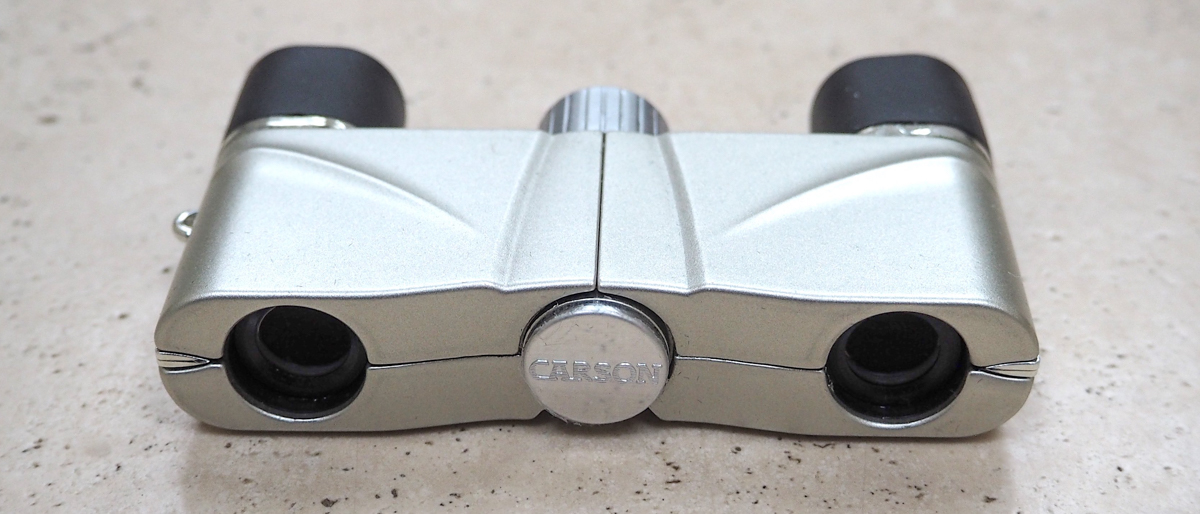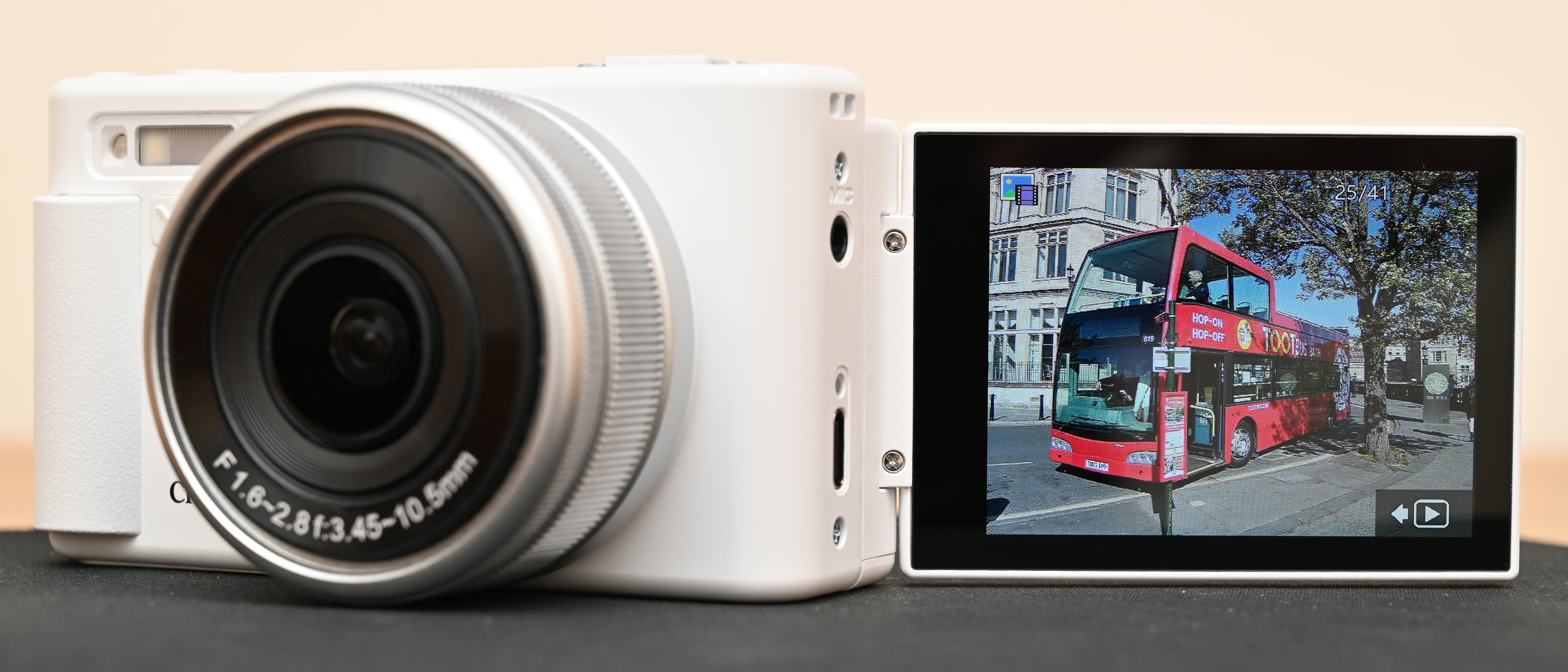Digital Camera World Verdict
Compact, lightweight and plastic-y, using the Carson Operaview OV-410 4x10 binocular is one way to achieve a slightly better view of the on-stage action, even when we’re sitting in the cheap seats. And on a practical note, the saving to be had over slightly more expensive seats could see the investment in this binocular repaid in just one or two theatre, gig, or opera going visits. We liked the fact that we could adjust the width of the device to best suit our own eyes and that a reasonably clear image can be achieved in low light at an event. While 4x magnification and a 10mm objective lens isn’t huge in terms of spec compared to a standard binocular, here it’s up to the task in hand, helps achieve the small and lightweight build, and, once critical focus has been achieved, a relatively steady and judder free view is maintained.
Pros
- +
Small and compact
- +
Relatively affordable
- +
Does the job it’s intended for
- +
Central folding mechanism allows for inter-pupillary distance to be adjusted
Cons
- -
Focus knob is stiff
- -
Plastic-y build
- -
Field of vision is limited
Why you can trust Digital Camera World
If we’re going to take a pair of binoculars to a live event we want something lightweight, portable and unobtrusive that is nevertheless going to do the job, as well as something that’s noticeably a step up in terms of visual performance from the fixed focus opera glasses sometimes provided by the venue for a minimal coin-in-a-slot fee.
Enter the Carson Operaview 4x10, the model name highlighting its 4x zoom and 10mm objective lens. While the plastic-y build quality doesn’t initially impress and unfortunately reminds us of something we might fish out of a Christmas cracker – an impression accentuated by their silver finish – we nevertheless remained intrigued as to how they would function in actuality.
On a more positive note, in being roughly the size of a small packet of playing cards, this Chinese-made example is diminutive enough to slip into the pocket of a shirt or jacket, or indeed a handbag, for surreptitious retrieval whenever the viewing occasion demands. We might even describe the product’s size as ‘optimal’, as we probably wouldn’t want anything smaller, or indeed too much larger. Some flexibility is offered as regards making adjustments for inter-pupillary distance, as the mini binocular possesses a useful and practical central folding mechanism.
So, those are our first impressions, but how does the use of the Carson Operaview OV-410 4x10mm device pan out in practice?
Specifications
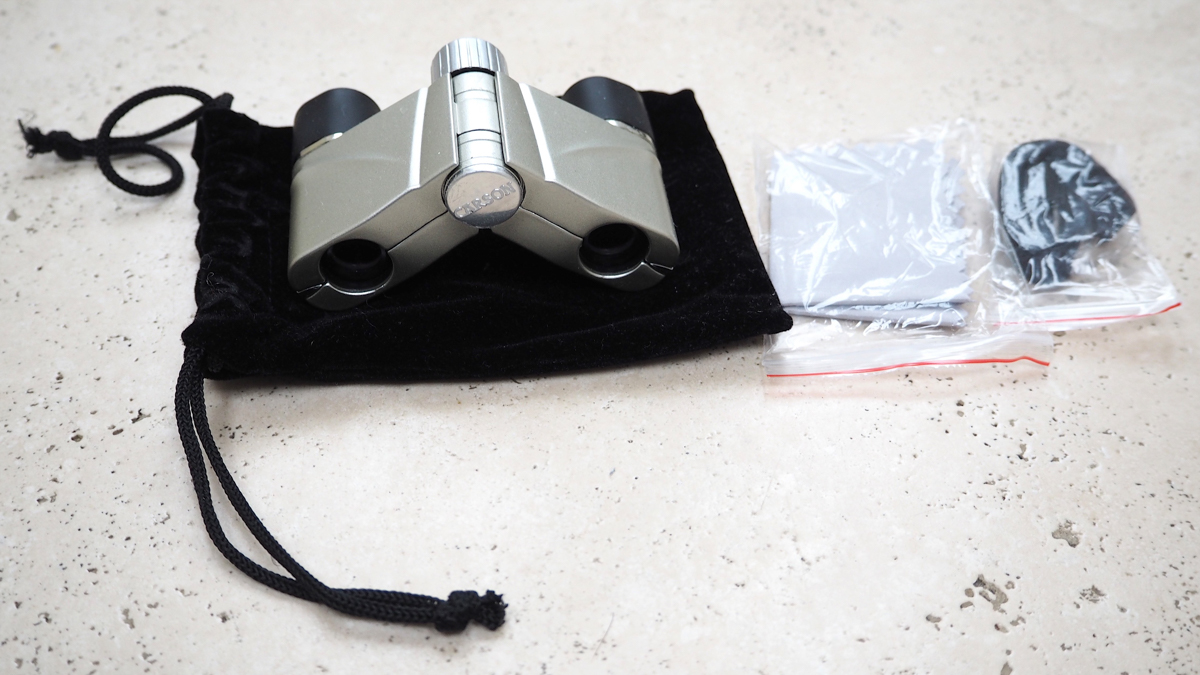
Magnification: 4x
Objective lens diameter: 10mm
Field of view at 1000m: 160 metres
Field of view at 1000yds: 525 ft
Closest focusing distance: 4.9 ft / 1.5 m
Eye relief: 13mm
Weight: 62g
Dimensions: 5.1x8.9x1.3cm, 3.5x0.5x2.0 inches
Key features
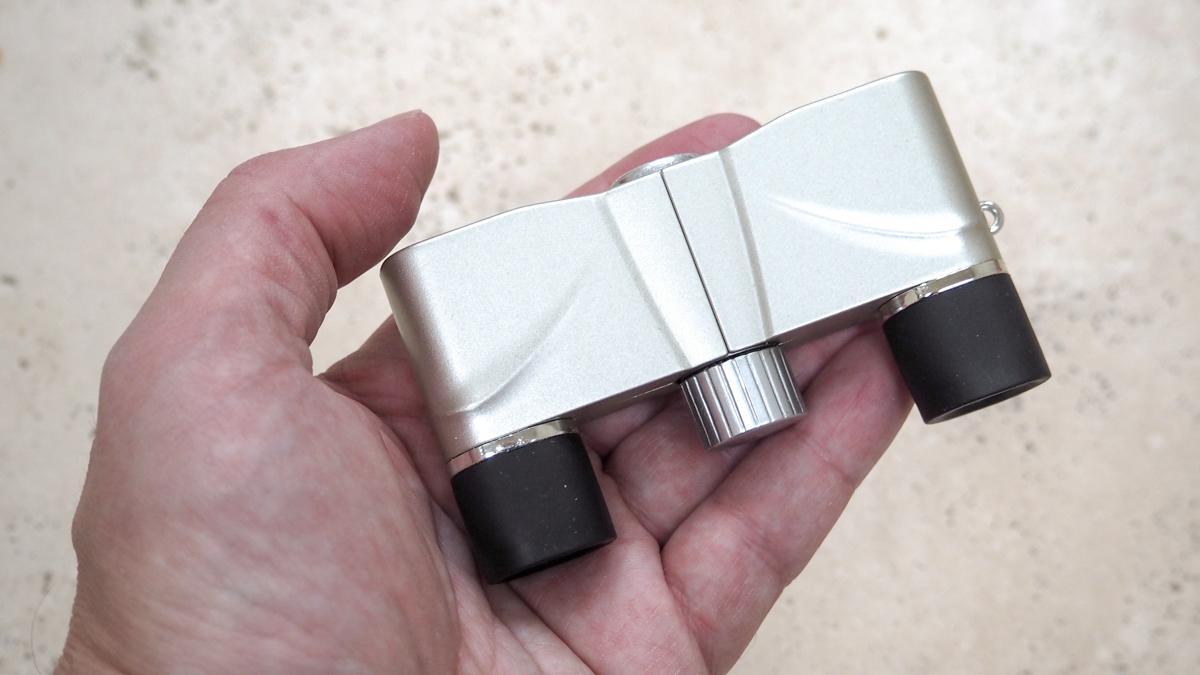
Boasting a 4x magnification and a 10mm objective lens, the specification here is obviously not top tier – but then a larger objective lens via which to let in more light and a more powerful magnification to go with it would have necessitated a bigger device altogether. This would be impractical in the confined, busy setting for which it’s intended for use, where you don’t want to be elbowing or distracting the person next to you. The very lightweight construction at just 62g, said to involve aluminium but in reality feeling like it’s mostly plastic, means these will easily slip into a pocket and allow us to forget they’re there. Indeed we were moved to pat our pocket a couple of times on the way to the performance we attended to reassure ourselves we hadn’t lost them.
Surprisingly given the toy-like exterior we’re also told BaK-7 prisms and fully coated lenses to improve light transmission are included in the construction. Given the very small size, there’s obviously not the means – or indeed need – to provide the ability to tripod mount, so there’s no screw thread in the base.
Accessories included out of the box are a soft pouch, a strap and a lens cloth – the soft pouch proving useful when transporting them out and about in a convenient pocket.
Build and handling
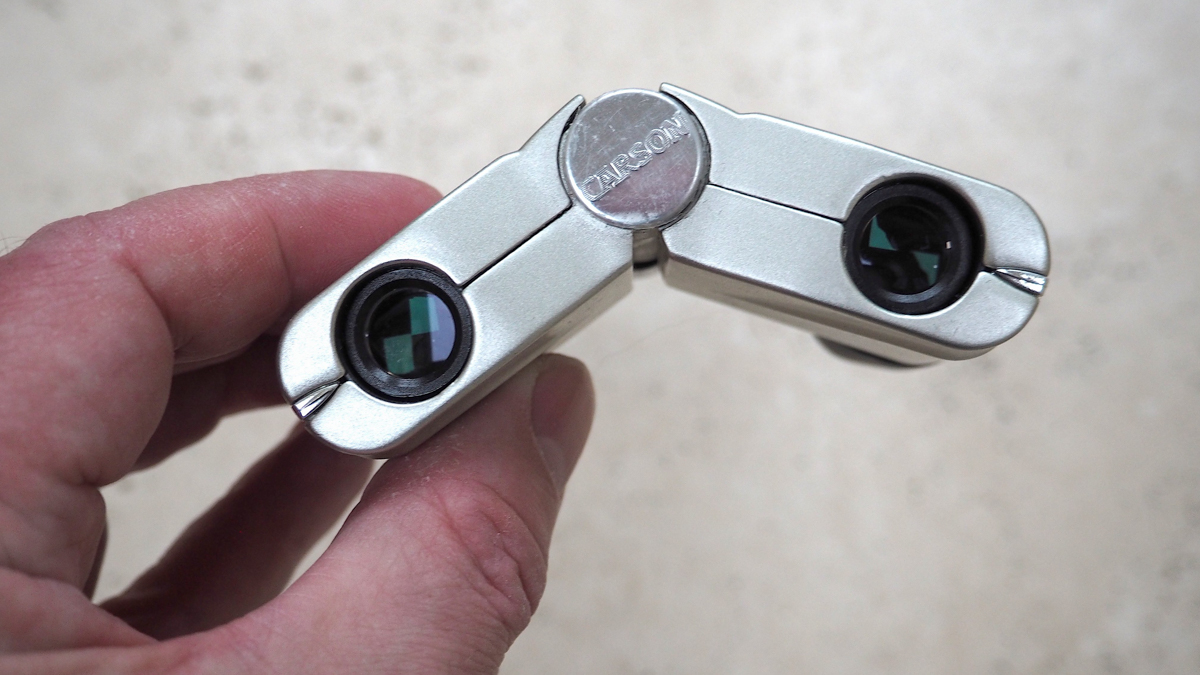
As noted, the construction of the Carson Operaview OV-410 binocular is on the plastic-y side – and is almost the sort of device that might tumble out of a large Christmas cracker. There’s not a lot that is flashy here in terms of looks and operation, but it is practical, with a familiar centrally located focus wheel sitting between the two eyepieces. We found said focus knob to be slightly stiffer than we’d like in operation, but at least this prevents accidental adjustments in the dark once critical focus has been achieved. The foldable nature of the device also allows us to perfect match the spacing of the eyepieces to our own eyes for a degree of comfort. Other than that, operation really is simplicity itself and so there’s not a great deal here warranting further discussion.
Versus
Most binoculars, which aren’t meant to fulfil a niche criteria of unobtrusive portability and functionality, are inevitably not quite as small as this Carson branded device. That said, there are alternatives for theatre and gig goers that are almost as diminutive, such as the Eschenbach Glamour 3x25 binoculars. German-made rather than Chinese of origin, the Eschenbach binocular looks the part for a night on the town thanks to their gold and white, or gold and black livery, plus more elegant retro-styled appearance. What these lose in magnification when compared alongside the 4x10 Carson Operaview OV-410 binocular, they make up for in objective lens size, theoretically letting in more light for a clearer brighter image for just a little more money than their competitor.
Performance
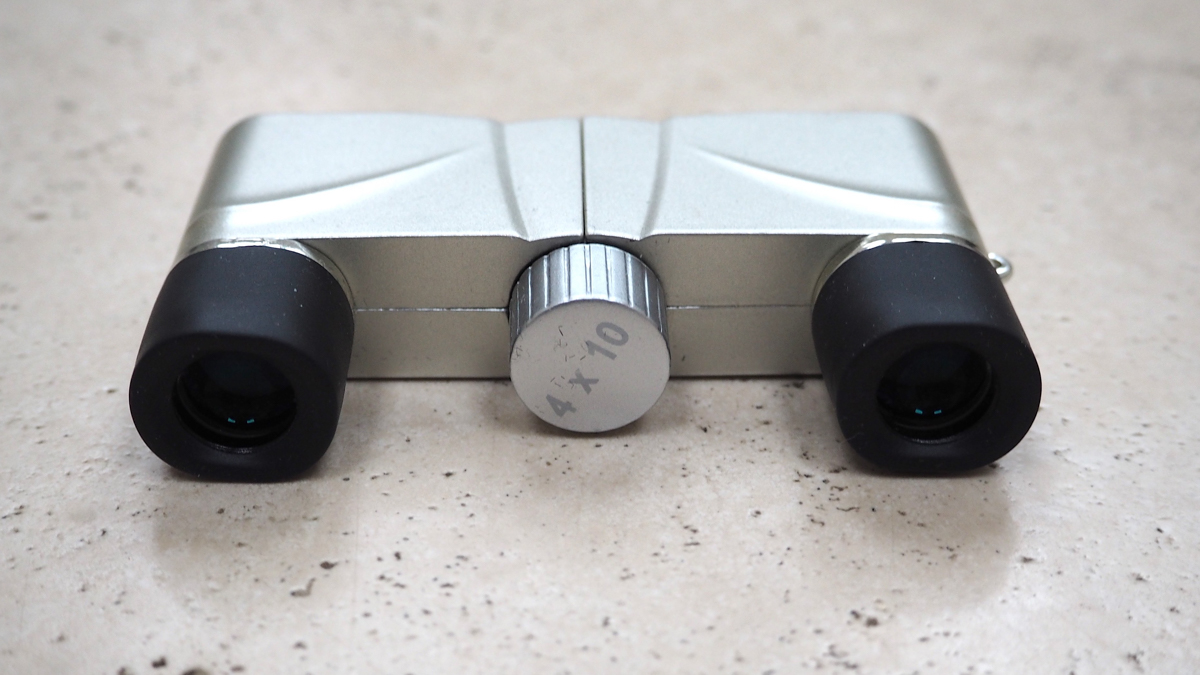
The arrival of this binocular coincided with an evening booked to see electronic duo Jockstrap at London’s Barbican. We were located in the stalls, row M, not a million miles from the stage, granted, but still at sufficient distance that nuances of facial expression begin to be lost. With the lights dimmed but our surroundings not exactly pitch black, we were able to conveniently retrieve the Carson Operaview OV-410 binocular from our jacket pocket for a real world test.
Adjusting the width of the binocular to match its eyepieces to our own eyes proved simple enough, thanks to its central folding mechanism, the action of which is stiff enough that once we’ve found what works it’ll remain locked in the position we’ve chosen. Slightly trickier to adjust in the dark and maintain a judder free view long enough to determine absolute clarity was the ridged focus wheel sitting between the eyepieces. Said stiffness means we needed to apply a certain degree of pressure to move the focus on, which, as this is done one-handed, means it’s difficult to hold the device steady when doing so. Thus our subject is jumping about before our eyes just as we’re trying to focus on it, which isn’t ideal, but it’s inevitable with a device this small and lightweight.
All this being said, we managed to find the focus sweet spot swiftly enough on performers who were relatively static on stage, though the stiffness of the device doesn’t make for rapid adjustment if we’re trying to track movements of performers across the stage and keep them in focus while doing so. For the price and convenient size though, we’re probably not expecting 100% perfection. Happily enough when we did achieve focus we found the device sharp enough to be able to register emotion in the face of whomever we were viewing.
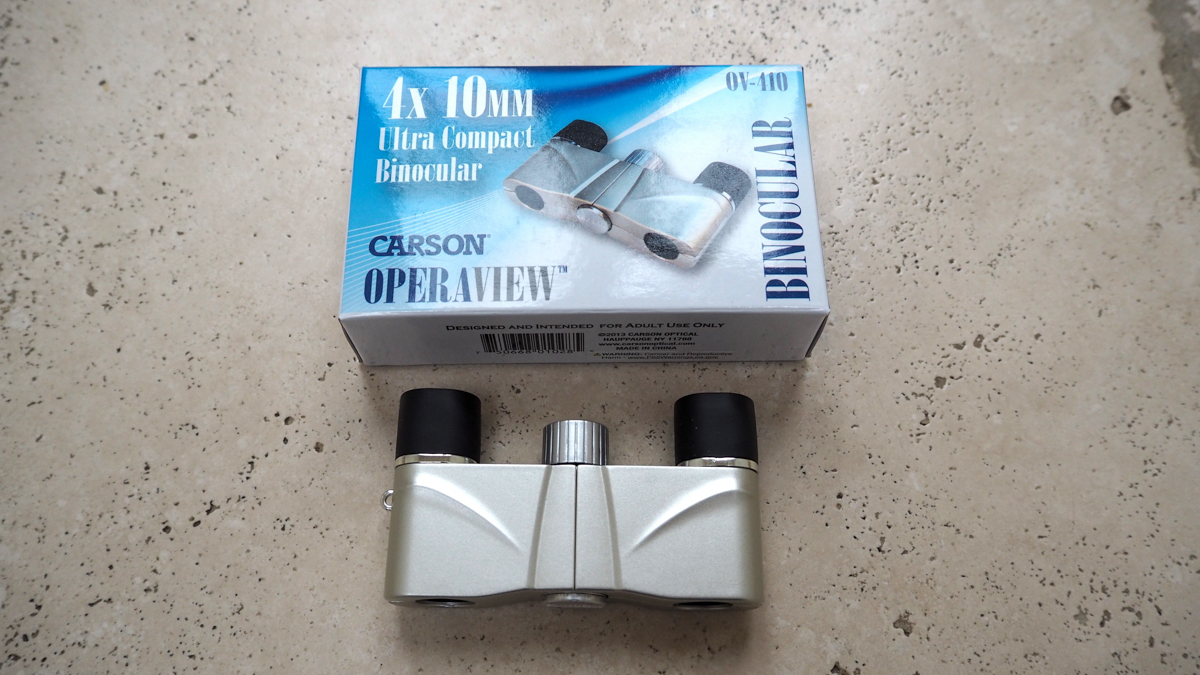
Verdict
Just as important as the view delivered, we’ll be considering this device for its very small size and lightweight top pocket-friendly build. The Carson Operaview OV-410 binocular gives an average sort of performance for a relatively inexpensive price, that while not quite toy-like cheap, is wearable nonetheless in terms of overall cost. If you’re still undecided, then a lifetime limited warranty may be all you need to tip you over the edge into making purchase. When you absolutely need the smallest most unobtrusive binoculars, which are a cut above an actual toy, these fit the bill.
Check out our guide to the best opera glasses. Also, see our other binocular guides:
• Best budget binoculars
• Best binoculars for kids
• Best binoculars
• Best night vision binoculars
Gavin has over 30 years’ experience of writing about photography and television. He is currently the editor of British Photographic Industry News, and previously served as editor of Which Digital Camera and deputy editor of Total Digital Photography.
He has also written for a wide range of publications including T3, BBC Focus, Empire, NME, Radio Times, MacWorld, Computer Active, What Digital Camera and the Rough Guide books.
With his wealth of knowledge, Gavin is well placed to recognize great camera deals and recommend the best products in Digital Camera World’s buying guides. He also writes on a number of specialist subjects including binoculars and monoculars, spotting scopes, microscopes, trail cameras, action cameras, body cameras, filters and cameras straps.

